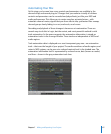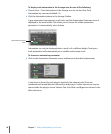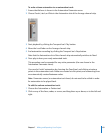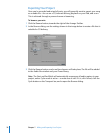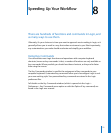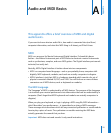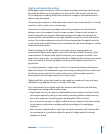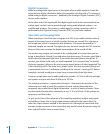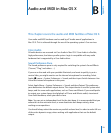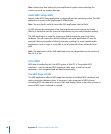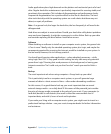
75
A
Appendix
A Audio and MIDI Basics
This appendix offers a brief overview of MIDI and digital
audio basics.
If you want to know what an audio file is, how audio is converted into (and from)
computer information, and what this MIDI thing is all about, you’ll find it here.
MIDI
MIDI is an acronym for Musical Instrument Digital Interface. To break this down
further—the Musical Instrument part of MIDI refers to electronic musical instruments
such as synthesizers, samplers, and even MIDI guitars. The Digital Interface part sounds
technical, but really isn’t.
Basically, MIDI’s Digital Interface is broken down into two components.
 MIDI is a computer-based language—and as you probably know, computers talk
digitally. MIDI keyboards, modules, and cards are actually computers in disguise.
 MIDI’s Interface is just that. MIDI is a hardware standard which consists of a set of
physical connectors labeled IN, OUT, and THRU. You will find one or more of these
connectors on all MIDI devices, such as keyboards or modules.
The MIDI Language
The “language” of MIDI is understood by all MIDI devices. The purpose of the language
is to translate your musical performance into information that can be understood by a
computer. (Don’t forget that MIDI keyboards and modules are actually computers in
disguise).
When you play your keyboard, or Logic is playing a MIDI song file, MIDI information—
which “describes” your performance—is transmitted as a string of MIDI messages.
These messages are instructions which tell any connected synthesizer or sound module
how to play a piece of music. The synthesizer or module receiving the MIDI data
actually generates the sounds that you hear.
Important: MIDI does not send sounds. It only sends instructions.



